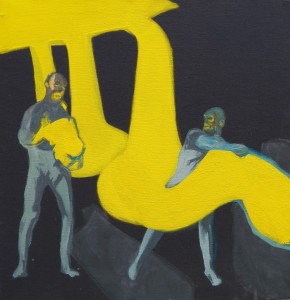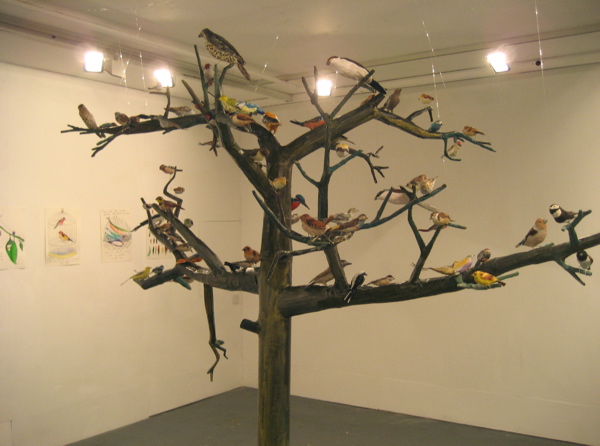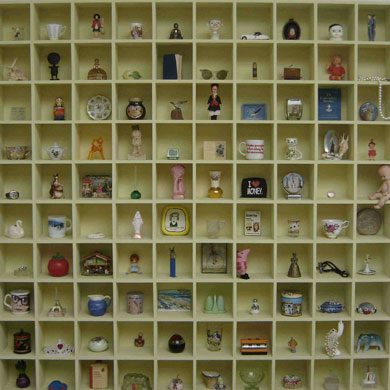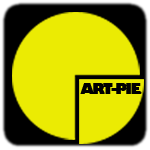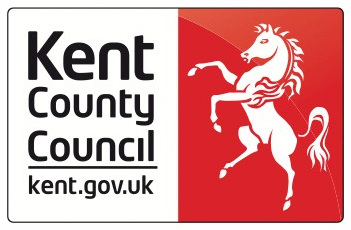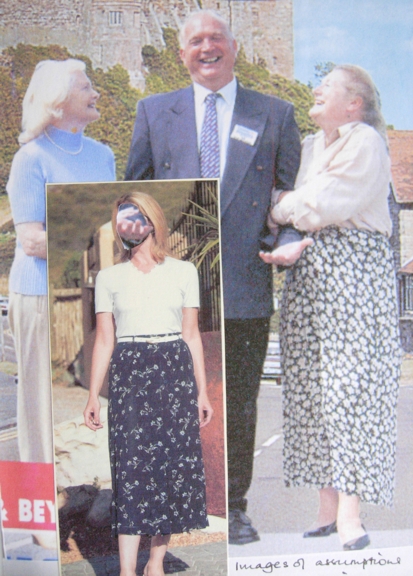Jester Jacques – First of all, how did your interest in art making come about? Were there any specific events or influences in your childhood which swayed you to be more creative?
Novemto Komo – I have always been doodling since I was kid, on the wall of my parent’s room and my room; also sticking stickers I got on the doors all around the house.
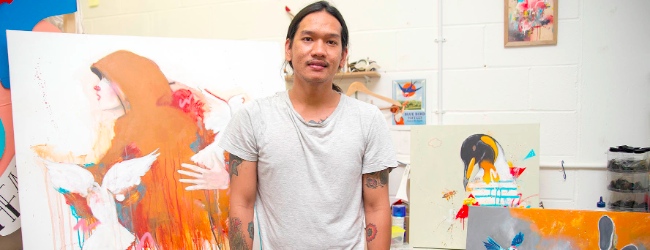
I remember when I was in kindergarten and elementary schools, almost every weekend my parents took me to “Ancol art market” to see paintings, sculptures and crafts by local artists. We got our family portrait from one of the artist there using paper cut, and when my sister and brother were born, we also get their portrait done by the same artist. I also participated a lot in kids drawing competition and some of them came out top 3.
I also remember saw a painting by Ford Madox Brown, titled “Take Your Son, Sir!” in a book and I was finally able to see it in real a year ago in Tate Britain.
JJ – You were born in Indonesia. Does any of the culture seep into your work, even though you live in the UK?
NK – It does influence me a lot. There is so many social issues going on in Indonesia that kind of influence my way of thinking when developing the idea.
Also, the diversity of animals in Indonesia can be seen on most of my artwork lately. A lot of animals in Indonesia are very rare now and a lot are in risk of extinct.
JJ – Where did you study Fine Art and do you think it helped in your career as a visual artist? In what ways?
NK – I never studied Fine Art, I was trained as multimedia designer which lead to my first job as a junior flash developer. Then as time went on, I got more jobs doing illustration which carried me into doing more hand drawing/illustration. I got more into painting when I took my master in graphic design in 2010 at Newcastle where I had a lot of spare time to practice and develop my skills.
JJ – What is your fascination with animals? And anthropomorphising them?
NK- I started using animal a lot in my artworks as they are part of our life. They are also very attractive subjects because they are beautiful. I believe every human has their wild side which I interpret through animals.
I also want to bring awareness to people about animal extinction, especially caused by poachers and hunter. I’ve followed and joined a hunter online forum and feel sad every time I see them posted photos of animal they killed proudly.
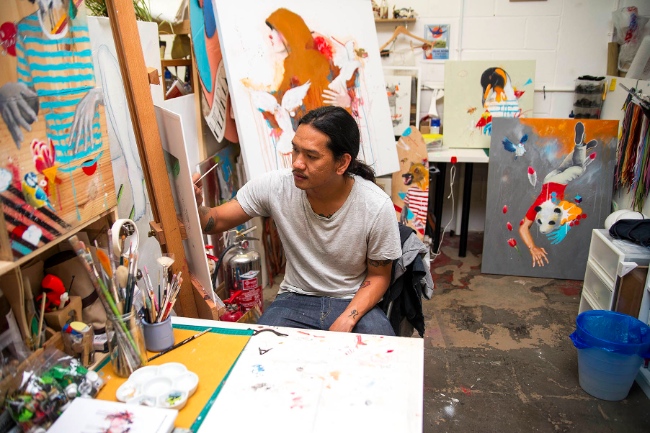
JJ – How do you get inspired?
NK – I get inspired from many things; news, people around me and their relationship towards each other. A lot of time I got inspiration by talking with strangers or random people. I visit Stolen Space Gallery a lot and Signal Gallery. I guess I get a lot of inspiration from street art around the world and there are so much of it in London created by international artists. To name a few, Faith47, Remi Rough, and Anthony Lister.
JJ – In your painting ‘Worst thing of Screaming,’ there is a feeling of pop art in there; the Lichtenstein type of shapes. Tell us more about that particular painting, as it stands out to me in your most recent body of paintings.
NK – The starting point of that painting was based on an idea of relationships. There are many situations where no one listens to you even when you scream out loud and sometimes it make you scream even louder, which end up make you feel like a freak show.
JJ – You do commercial work as an illustrator. What do you enjoy doing more – that, or your personal work? Is there an overlap in ideas and style, or do you try and keep them separated?
NK – I always try to separate the idea and style between them, but I have to admit sometimes there’s a mix in some of them.
JJ – Your work has a collage feel to it. How do you begin a new piece? Do you actually cut and paste, or just play with objects and figures as you go along?
NK – I never thought my work has a collage feel but I heard some people said that they thought my work was a collage, especially “escape the game.” I guess I just play with objects, figures and imaginations to visualise my idea into a painting. Many times when I’m in the middle of painting, I come out with some graphic elements that I can incorporate with and I just play around with it.
JJ – Do you have any exhibitions or projects/events coming up which we should look out for?
NK – The exhibition that I confirm at the moment is in December but I am doing another live art on the Tuesday the 24th this month during Jam Sandwich at The Russet Cafe. It is a monthly music event which I paint live depending on that night performers.
JJ – Finally, what piece of advice would you give young artists who want to pursue visual/fine arts?
NK – If you’re happy doing it, keep doing it as you never know what might happen.
Related links
Artist Website: http://novemtokomo.com
Jester Jacques Website: http://www.jesterjacquesgallery.co.uk

